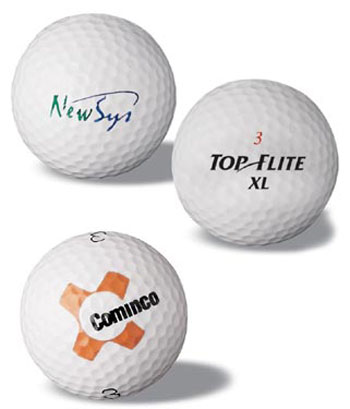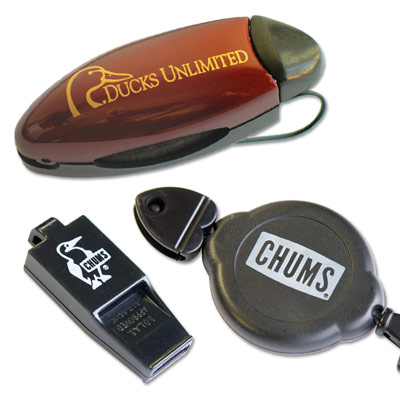Pad printing is a printing process that involves transferring a 2-D image onto a 3-D object. Pad printing services give customers the opportunity to personalize almost any product, whether it’s a golf ball or a nail polish bottle. Using a pad printing machine, a pad printing company can create multi-color designs or logos on any product. The benefits of product pad printing include the following:
- Any material can be printed with suitable inks. The variety of materials you can work with when it comes to pad printing for products makes the possibilities and opportunities for businesses endless.
- Resolution is better than screen printing. This means that it’s possible to print very finely onto the product without fear of it being illegible or smudgy.
- Highly resistant. Although it depends on the type of ink used during the pad print, it is possible for the ink to be highly resistant to mechanical abrasions or chemicals.
- Ability to print multiple colors. Multi-color printing is possible when it comes to pad printing on products because there is no intermediate drying.
- Plates and inks can be exchanged within a few minutes. The entire pad printing process is relatively simple and fast, and pad printing equipment is small and quite easy to manage. Plus, pad printing supplies require very little maintenance.
- Easy integration into complex systems. For many years now, pad printing manufacturing has been successfully integrated into complex systems that involve injection molding equipment and assembly lines.
- Low drying cost. In most cases, pad printing companies let their pad printed products air dry at room temperature, which is easy and free.
Pad printing manufacturing is only going to grow in the next few years. Print, even in this online era, is not out of style. In fact, the print industry in general is a $640 billion industry (18 times bigger than the video game industry). The U.S. print industry profits were up every quarter in 2010 and 2011, and business printing grows at 6.8 percent annually worldwide. Printing continues to make its mark on the world even amidst the growth of businesses online.
How Can Pad Printing Help Your Business?
With that said, how can investing in a pad printing service help you business? Why do your products need pad printing? The following reasons explain why:
- Adds personality to your product. Pad printing is a fun, easy way to put your logo on your products, which will help set your product apart from similar products by adding personality to it. A product with a strong, unique logo will stand out more than a product with nothing on it.
- Increases brand awareness. Putting your logo on your product not only adds personality to it, but it makes people more aware of your brand, and therefore your business. When someone sees your logo, they’ll think of your business, and then they’ll go to your business to buy the product.
- Gives you an opportunity to create unique business cards. If your business doesn’t sell tangible products, you can use pad printing to create business card substitutes on golf balls, hand sanitizer bottles, or other products. Although it may be an unconventional way to create business cards, it will certainly set you apart from many of the generic ones out there.
- Saves you time and money. Applying printed information directly to your product in fast, easy steps will not only save you money, but it will also save you time, which is just as valuable as money in the business world.
What Are the Steps of the Pad Printing Process?
Commercial pad printing services use pad printing equipment and supplies to make the whole process easy and smooth. The following steps outline what exactly the pad printing process entails:
- The sealed ink cup—an overturned cup that holds ink—is placed over the artwork area of the printing plate so that it covers the image and fills it with ink.
- The sealed ink cup pulls away from the etched artwork area after having filled it with ink. This ink is then exposed to the air and becomes somewhat sticky.
- The transfer pad presses down onto the printing plate, and as the pad is flattened, it pushes out air. The ink then transfers from the etched artwork area onto the pad.
- Once the transfer pad lifts up, the sticky ink inside the etched artwork area is picked up on the pad. A little bit of ink is left in the printing plate.
- The ink cup moves to cover the etched artwork area on the printing plate as the transfer pad moves forward. The ink cup fills the etched artwork image again on the plate with ink in order to prepare for the next cycle.
- The ink layer is then transferred to the surface of the material on which the printing is happening as the transfer pad presses down onto the material. Once the transfer pad lifts up, one print cycle has been successfully completed.
While it may sound complex upon first reading it, the pad printing process is actually quite simple. It’s a fast, easy, and excellent way to get your company’s name and logo circulating in the hands of potential customers.
Contact Streamline Fulfillment Today to Learn About Our Pad Printing Services
If you’re interested in increasing your business’s brand awareness and adding personality to your products, call Streamline Fulfillment today. We offer pad printing services (as well as kitting services for any of your packaging needs) to any business trying to grow or expand in different ways. Contact us today to consult with a Streamline representative by calling (801) 782-3660 or by visiting streamlineplastics.com.

